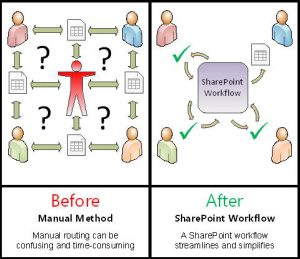Architecture and rock-n-roll are dead
INTRODUCTION
Architecture is dead…
Oh yeah… In case you forgot, Rock-n-Roll is dead too. Europe is dead. Civilization is dead… Too many bodies, don’t you think?
Don’t worry, I know how unoriginal exclamations like this are since Oswald Spengler’s prophecies. Unfortunately, authors rarely provide a justification for such raw emotion. Therefore, I will try to give you some logic by comparing my beloved Architecture (which is quite a narrow field) with Rock Music, an industry with billions of fans and huge interest from the masses.
So let’s get started. You can put “Rock-n-Roll is dead” by Lenny Kravitz in the background. You will enjoy the trip. Lenny always delivers great tunes.
Generally speaking, since Roman times there have been two types of operating systems: “Business” and “Show” (the Romans justly called it “Panem et circenses” – “Bread and circuses”). The “Business” template works well in industrial production, high-tech, banking, retail, construction, energy, and even science. It’s called capitalism. (Ultimately we might have a problem, but this would be a totally separate discussion.) The “show business” model works even better for all the so-called entertainment industries, mainly sports, film and music (gladiator fights in Rome). Before that, the main entertainment industries were called Art. But the show business model works so well that no one seriously considers modern cinema or pop music to be art. Today the world of entertainment is omnipotent. The rest are marginal occurrences (theatre, opera, auteur cinema, independent labels, etc…) supported by governments or private charities. That is the basic structure of our society and there is no field of human activities that can escape the fate of rapid commercialization and a greater exaltation of its substance. (I guess the TV commercials are the apotheosis of this.)
STAIRWAY TO HEAVEN
As technical progress gained momentum, the architecture had no choice but to move towards a commercialized model. At first, however, it was a different type of business compared to Ford’s conventional a-conveyor-belt capitalist template. The architect was still a highly respectable figure with an influential individualist position (think Mies or Frank Lloyd Wright), regardless of tax benefits. The architect’s primary concern was creative design carefully balanced between the newest building science and traditionally accepted aesthetics.
Then the ideologies of mass production and mass consumption came into play. There is no point in discussing the objective necessity of it. Obviously, the 20th century (wars, population growth, scientific development, etc.) has required new paths for the development of the architectural profession. However, I am not so convinced that the chosen path that has transformed an Art of Architecture into the business of architecture (a tedious mechanical business full of standards, licences, and bureaucracy) is the only answer to the challenges of time. As a result, however, we have had a boring business environment (glimpsed by Corbu’s dogmatic utopias) where architects were running orthodox businesses and people were getting boring boxes of orthogonal housing. On a public front it was even worse. After the chic, innovative elegance of the Chicago School (architecture was still an art) and the pseudo-classical but impressive fascist architecture (architecture served the pride of dictators), the ugly brutalism of the 1950s and 1970s with those monsters of oversized concrete was a very explainable result. That was the price architects paid for becoming entrepreneurs.
However, the 60’s were the best years for Rock-n-Roll. It wasn’t business yet. It was like the architecture of the 1920s. Smart, melodic, bold. It’s funny, but the best rock ballad of all time sounds very architectural, it’s called “Stairway to Heaven”… I think Frank Lloyd Wright would love Led Zeppelin, after all, at the Guggenheim Museum he presented a cool solution for that ladder… .
WHERE THE STREETS HAVE NO NAME…
But rock-n-roll has changed very quickly. In the ’70s, his free hippie spirit was replaced by a serious business dress code. Producers have quickly produced numerous furry clones, flamboyant clowns called glam-rockers or disco stars.
At that time, architecture and rock music were practically in sync: scary brutalism has been replaced by an architectural version of glam-rock: postmodernism.
They were both really “bad medicine” (remember Bon Jovi I hope?).
However, there was an opportunity. In the 80’s, the most talented musicians and architects were trying to break the rotten system. They openly defied the fundamental rules of business. Metallica refused to produce music videos for MTV, U2 recorded their legendary “Streets…” live fighting the police on rooftops, Zaha and Libeskind were obsessed with their creative codes and artistic freedom without tax restrictions or building codes. (I bet Lebbeus Woods could have created a super stylish album cover for Metallica.) In the early ’80s, amid fake glam-disco-post-modern tunes, those rock bands and deconstructivist architects played real rock-n-roll. It was loud. I was angry. It was real. It was an Art, a wonderful mirage in the middle of a business desert…
OH I DID IT AGAIN…
If you can’t kill them, buy them. That’s how it works in show business and that’s how it worked for Architecture and Rock-n-Roll in the last decade or so. Mirage has evaporated. Amidst a business desert landscape of hard-working, low-paid, and primitive-thinking architectural practices (which is an architectural profession today), great superstar figures have been formed. It’s no surprise that the stars were recruited from among such talented ex-rebels: Zaha and Libeskind sold their souls just like Metallica or U2. For showbiz architects, they found a catchy nickname: STARchitects. STARchitects happily joined the club of their rock-pop star friends and started… making money. His current projects and albums are big and loud but empty and soulless. The music is gone… the touch of God is gone.
Let’s be fair, those ex-mavericks were extremely skilled artists. And while his current creations are fully commercialized, they’re pretty solid professionally. Bono has a great voice just like Libeskind has a great imagination.
Now I would like to know “what’s next”. I think we will soon remember those glam-rockers and post-modernist buildings with great sympathy, as the new generation is entering. There are no more architectural motifs in the songs. There is no music in the buildings.
The new tune is: “Oops, I did it again…” Frankly, doesn’t that sound like Britney Spears looking at those latest proposals from star architects?
FINAL AGREEMENT
Today there are tons of records on the web, thousands of great bands and concerts, new high-tech gadgets making music available everywhere for virtually free (pay 99c to iTunes, don’t steal)…
Architects easily produce super-accurate drawings based on CAD applications; enthusiastically design super-tall buildings. Today we need to design and build on a much larger scale than in any previous period of time…
However, as an art form, as an exclusive intellectual position of the creator, as an independent expression of human talent, Architecture is very dead. And so is Rock-n-Roll.









